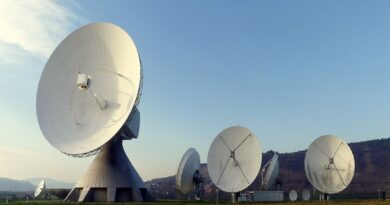Ad hoc and wireless sensor networks MCQ
Ad hoc and wireless sensor networks MCQ question and answer for Anna University Examination.
Ad hoc and wireless sensor networks EC8702 FOR ECE.
Ad hoc and wireless sensor networks MCQ
Unit 1 is the ad hoc networks introduction. the element of ad hoc wireless networks all the basic concepts covered in the unit 1. DSDV destination sequenced distance vector on demand routing protocols.
All the below video are very important mcq for ec8702. Anna university online examination point of view all the below questions and answers are very important. you will go through all the question with answers, you will be score good marks in ad hoc and wireless sensor networks.
AD HOC NETWORKS – INTRODUCTION AND ROUTING PROTOCOLS
1. The sampling time of a _______ is shifted as a result of delay spread.
a. transmitter
b. receiver
c. decoded
d. demodulated
2. _________ is the major tool used analyzing frequency selective fading effects.
a. ISI
b. diversity techniques
c. simulation
d. wireless link
3. _________ increases the capacity of a cellular system since it increases the number of times that channels are reused.
a. central area.
b. grade of service
c. sectoring
d. cell splitting
4. The ______ added in the transmitter side is then removed and using N point fast fourier transform.
a. cyclic prefix
b. carrier frequency.
c. GII
d. IFFT
5. The time required to allocate a __________ radio channel to a requesting user.
a. trunked
b. blocked calls delayed
c. request rate.
d. traffic intensity
6. The ____ is a measure of the ability of a user to access a trunked system during the busiest hour.
a. adjacent channel interference
b. grade of service.
c. handoff
d. intra cell interference
7. A cellular telephone system provides a wireless connection to ___________ for any user location which is with the radio range of the system.
a. public switching telephone network
b. high quality service
c. frequency spectrum
d. frequency reuse
8. _______ provides two distinct bands forward and reverse band of frequency for every user at the same time.
a. FDMA
b. FDD
c. CDMA
d. TDMA
9. It perform well for _________ with high SNR as local wired telephone lines.
a. dynamic channel
b. equalization
c. static channels
d. none of the above
10. ________ is currently being used with the telecommunications and networking industries
a. MIMO
b. OFDM
c. V blast
d. spatial multiplexing
11. _______ switched and have a number of pre defined patterns the one being switched according to the direction required.
a. phased array system
b. adaptive array systems
c. MIMO
d. zero forcing
12. The simplest methods for _________ is the use of on frequency repeaters that receives a signal and retransmits an amplified version.
a. micro diversity
b. macro diversity
c. angular diversity
d. frequency diversity
13. _________ is the combination of radio signals from a set of small non directional antennas in order to simulate a large directional antenna.
a. zero forcing
b. threshold
c. rake
d. beamforming
14. In Communication ________ is a mathematical function that is zero valued outside of interval and is the process of taking a small subset of a larger dataset.
a. window function
b. transfer function
c. rayleigh fading
d. gaussian pulse
15. The ________ is a desirable method because it reduces the burden on the network, this will increase the complexity of the mobile terminal.
a. NCHO
b. MAHO
c. MSC
d. MCHO
16. All the transmitter components from source to multiplexer stage are unified and kept in one unit and named as ________
a. digital data source
b. converters
c RX ADC
b. UP converter
17. Which is used to provide large area coverage to high speed users while providing small area coverage to users travelling at low speeds.
a. network controlled handoff
b. umbrella cell approach
c. base station
c. MIMO
18. The ________ cell shape permits easy and manageable analysis of a cellular system.
a. pentagon
b. rectangle
c. ellipse
d. hexagon
19. Traffic intensity across the entire trunked radio system is load and it is measured in _______
a. erlangs
b. BS MS
c. shannon
d. none of the above
20. The time over which a call may be maintained within a cell without handoff is called _____
a. repetition coding
b. dwell time
c. temporal diversity
d. multi carrier frequency
21. A basic MLSE estimator structure and implemented it with the ______
a. correlation
b. viterbi algorithm
c. automatic repeat request
d. polarization
22. If a normal GSM time slot consists of six training bits , 8.25 guard bits 26 training bits, and two traffic bursts of 58 bits of data , find the frame efficiency.
a. 85%
b. 84%
c.75%
d.74%
23. The zone are connected by a coaxial cable, fiber optic cable, or microwave link to _______
a. MIMO
b. micro zone
c. base station
d. both b and c
24. __________ is a simple binary modulation which may be viewed as a derivate of MSK.
a. QPSK
b. MSK
c. BER
d. GMSK
25. M branches are weighed according to their individual ________ ratios and then summed up.
a. signal to noise ratio
b. scanning
c. statistical
d. signal voltage to noise power
ALL THE BEST





Pingback: Optical Communication mcq ec8751 mcq questions - CHROME TECH